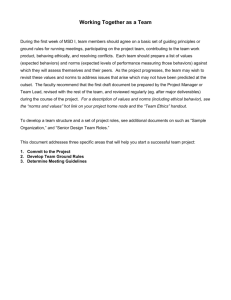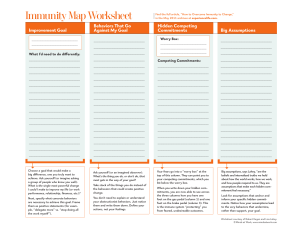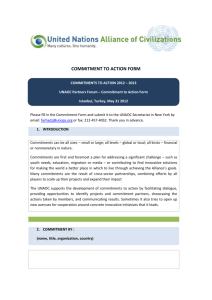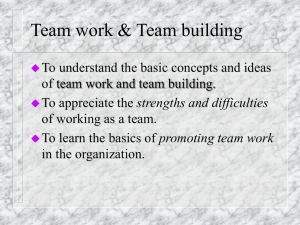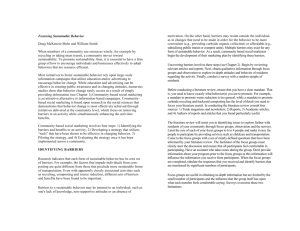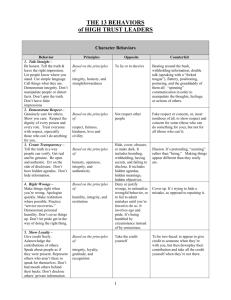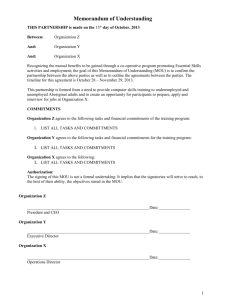Effective Change at the Community Level Barbara MacKinnon
advertisement
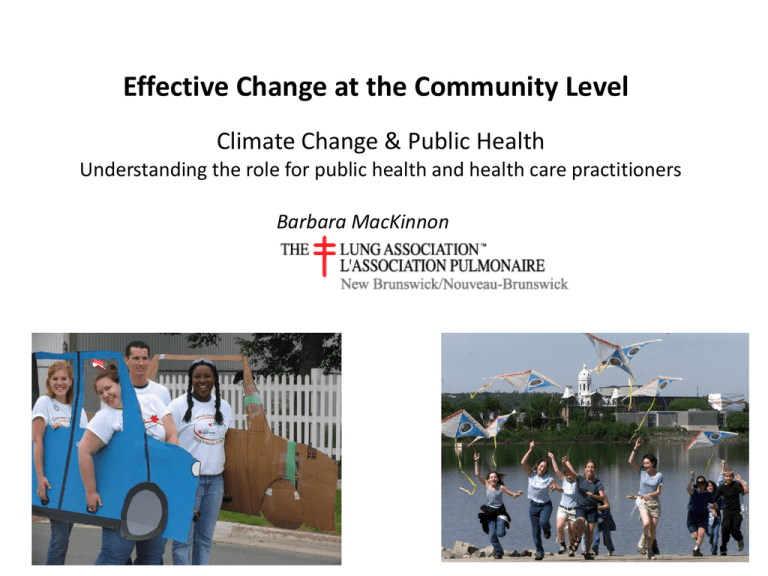
Effective Change at the Community Level Climate Change & Public Health Understanding the role for public health and health care practitioners Barbara MacKinnon So you want to change someone’s behavior….. “I’m just not feeling sufficiently incentivised today.” Behaviour Change/ Community-Based Social Marketing A process that leads to desired changes in behavior A growing body of literature supports the following strategy Getting started What behavior should be promoted? Who should the program target? (Ie. those currently having unsustainable behavior, or those most likely to change) What conditions will person face in trying to adopt new behavior? Typically the old behavior has more perceived benefits or fewer perceived barriers than the new behavior. Steps involved in a Behavior Change Project: Discover barriers … and benefits Plan the use of Communications, Commitments, Prompts, Norms, Incentives Design program, pilot project, refine, implement full program and evaluation Why do we need to know the barriers and benefits? To increase the benefits of the new behavior/ Decrease the barriers Barriers can be internal (not knowing how to do something) or external (no infrastructure to support new behavior- no transit system in your town) Education alone and economic benefits alone do not change behavior. Remember - there are social, cultural and emotional reasons for established behaviors. To find barriers and benefits: 1. Literature review 2. Qualitative research- Observation (what are people doing and why) Focus groups (ask a random group about their perceptions) 3. Quantitative- conduct a survey about issues, perceptions, barriers Communication- The art of persuasion Use captivating information Know your audience Use credible information Frame your message (messages which emphasize losses due to inaction are more persuasive than messages that emphasize savings as a result of action) Fear messages must be combined with solutions Model the behavior Provide feedback Commitments Obtain small commitment Obtain larger commitment Recognize commitment in public Obtain commitment in groups, in writing Use commitments of a champion (block leader) Commitments must be voluntary Involve the person making the commitment Follow up Prompts Make them noticeable Place near to the target behavior Should indicate the action needed Encourage positive behavior, rather than prompt to avoid negative behaviors Norms Create social norms that will encourage others to do the behavior Use compliance rewards, or penalties Promote conformity to accepted behaviors Norm should be visible People must internalize or habitualize the norm Incentives ie. bottle deposits To reward positive behavior Make incentive visible Consider non-monetary incentives Factors Influencing the Decision to Drive or Walk Short Distances to Public Transport Facilities Walton, D. & Sunseri, S. (2010). Factors Influencing the Decision to Drive or Walk Short Distances to Public Transport Facilities. International Journal of Sustainable Transportation, 4(4), 212-226. Samples of drivers and walkers are examined to understand factors influencing the decision to walk. The driver sample was limited to those who lived within 1 km of the park-and-ride facility to avoid confounds such as car dependency and travel distance. These drivers exhibit a break in car dependency because they use public transport. A 62-item survey examines ten main factors: fear of crime; trip-chaining; weather; distance/time; social pressure; fatigue and fitness; parking charges; enjoyment of walking; inconvenience; and geography. Results show the convenience of a car park induces park-and-ride demand. Weather influences decisions to walk. However, walking is not impeded by factors such as distance, fear of crime, carriage of goods or concern for time. Yes You Can

